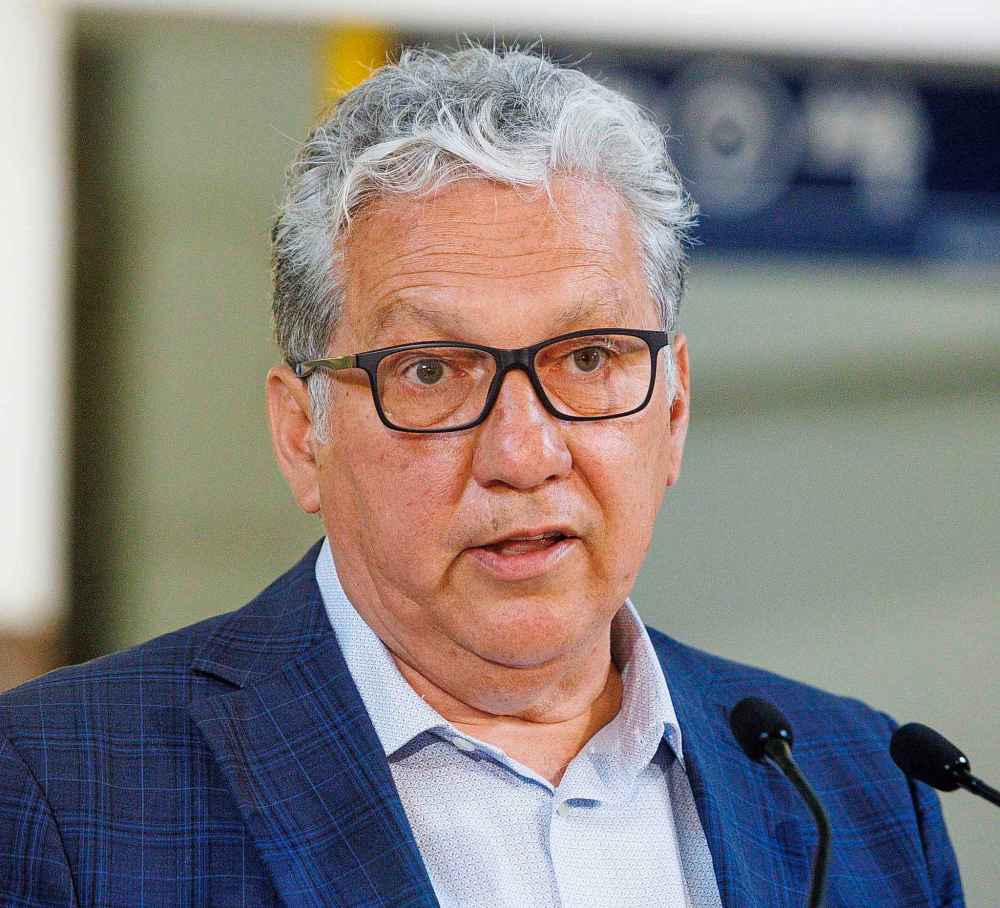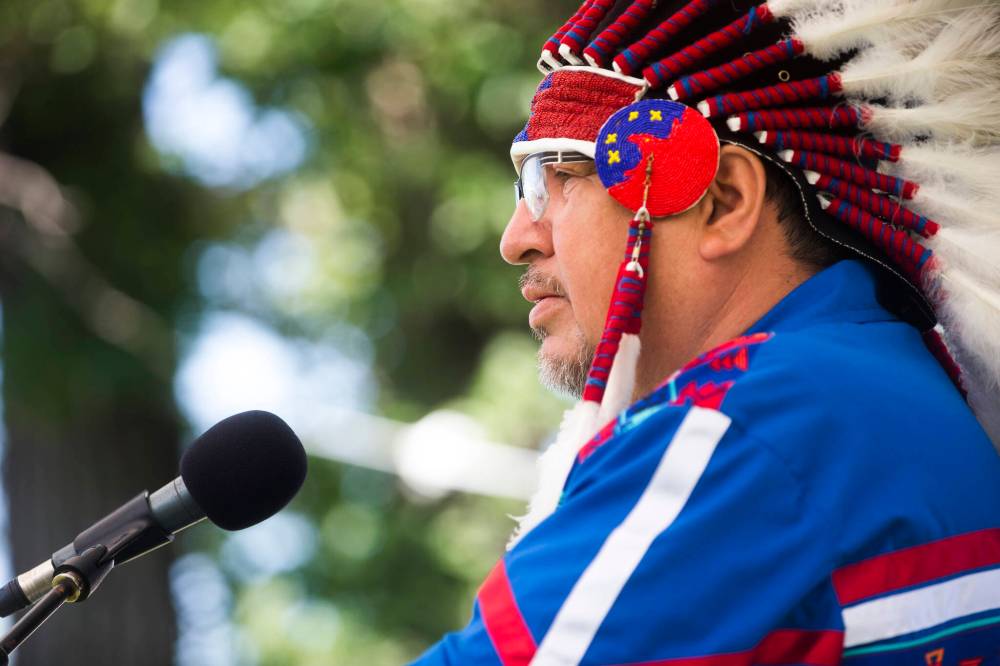Search for Pimicikamak graves finds 187 anomalies
Advertisement
Read this article for free:
or
Already have an account? Log in here »
To continue reading, please subscribe:
Monthly Digital Subscription
$1 per week for 24 weeks*
- Enjoy unlimited reading on winnipegfreepress.com
- Read the E-Edition, our digital replica newspaper
- Access News Break, our award-winning app
- Play interactive puzzles
*Billed as $4.00 plus GST every four weeks. After 24 weeks, price increases to the regular rate of $19.00 plus GST every four weeks. Offer available to new and qualified returning subscribers only. Cancel any time.
Monthly Digital Subscription
$4.75/week*
- Enjoy unlimited reading on winnipegfreepress.com
- Read the E-Edition, our digital replica newspaper
- Access News Break, our award-winning app
- Play interactive puzzles
*Billed as $19 plus GST every four weeks. Cancel any time.
To continue reading, please subscribe:
Add Winnipeg Free Press access to your Brandon Sun subscription for only
$1 for the first 4 weeks*
*$1 will be added to your next bill. After your 4 weeks access is complete your rate will increase by $0.00 a X percent off the regular rate.
Read unlimited articles for free today:
or
Already have an account? Log in here »
Hey there, time traveller!
This article was published 03/07/2024 (456 days ago), so information in it may no longer be current.
A search for potential residential school burial sites at a northern Manitoba First Nation has found 187 anomalies — both where the school used to be and in other places used by the facility, which was run by the Catholic Church.
Pimicikamak Cree Nation Chief David Monias said ground-penetrating radar was used to find the anomalies at the school site, the location where the residences had been, a garden, near the airport, and other community areas, including the old Roman Catholic cemetery. All were between one to two metres underground.
Cross Lake residential school outbuildings and church in 1947. (La Société historique de Saint-Boniface)
“For us, it’s quite shocking to hear that many, because you wonder how many missing children are there?” Monias said at a news conference held in the community Wednesday afternoon.
“This process of uncovering our truth is a crucial step towards healing.”
More than 150,000 Indigenous children were forced to go to residential schools across the country for decades.
The Catholic-run Cross Lake Indian Residential School, also known as St. Joseph’s Residential School, housed 1,240 First Nations children from 1912 to 1969. A smaller school, known as the Notre Dame Hostel, operated from 1960 to 1967.
The Pimicikamak Cree Nation, also known as Cross Lake, began trying to research, locate and commemorate children who died at the two local residential schools in 2021, after the announcement that anomalies — potential remains — were found that year at a First Nation in Kamloops, B.C.
Pimicikamak secured $2.1 million in federal funding and began the radar-penetrating search in the summer of 2022. The search continued last summer.
“For us, it’s quite shocking to hear that many, because you wonder how many missing children are there?”–Chief David Monias
In total, 27 Manitoba First Nation communities, as well as the Assembly of Manitoba Chiefs, Manitoba Inuit Association, Manitoba Keewatinowi Okimakanak, and the Manitoba Métis Federation have received $28.8 million from the federal residential schools missing children community support program. The funding can be used for local research and knowledge gathering, commemoration and memorialization, and field investigation work, including ground-penetrating radar.
The Truth and Reconciliation Commission documented the deaths of 30 children at the community’s main school. The local diocese presented documents in August 2021 that revealed 54 other children had died at the main school.
The community of about 10,000 people, is located roughly 530 kilometres north of Winnipeg.
MIKE DEAL / FREE PRESS FILES Dan Vandal, Minister of Northern Affairs.
Federal northern affairs minister Dan Vandal, a Winnipeg MP, said the federal government is “grieving along with them.”
“To me, it just really underscores the horrible tragedy that residential schools have had on our country and First Nations, Métis and Inuit, specifically. We have supported Pimicikamak in the past and they certainly can count on our support and my personal support as minister, in continuing this work. We will be there for them in any way we can throughout this process.
“We have always said we will be there and we will be there.”
Sheila North, Canada program manager for the International Commission on Missing Persons, and a former grand chief of MKO, which represents northern First Nations, said the organization was originally invited to Canada by Pimicikamak.
“ICMP stands ready to support Pimicikamak in what they need to address the issue of missing loved ones in unmarked graves,” said North.
“It just really underscores the horrible tragedy that residential schools have had on our country and First Nations, Métis and Inuit.”–Dan Vandal
Monias said the company hired to do the search, Axiom Explorations of Saskatoon, first went to the community’s old cemetery to do a test before going to other areas of the community.
“What does a grave look like?” he said. “We have a unique ground and earth, the composition of earth is different.
“We had to find out what we were looking for, basically.”
They found the first anomalies at the old cemetery.
“They found 59 anomalies, of grave sites which were not marked, which were not identified,” he said.
The equipment was next used near the community’s airstrip, where another 44 anomalies were found even though it was a place which “had already disturbed a lot of the ground because of the airstrip.”
MIKAELA MACKENZIE / FREE PRESS FILES Pimicikamak Cree Nation Chief David Monias.
“This process of uncovering our truth is a crucial step towards healing.”–Chief David Monias
Twenty-four anomalies were found where the school and residences had been, while 23, 16, 13, and eight were found in other areas of the community where the church staff had been at the time.
“The discovery of 187 anomalies, including 59 unmarked graves, underscores the profound pain endured by our people… and the tragic history of the residential school system,” Monias said.
“In response to these findings, the community will conduct ceremonies to honour those who are buried there, and those who may be buried there, and those who never returned so we can help them find their souls, to find peace, in the spirit world.”
In Manitoba, 14 anomalies were found at the site of the former Pine Creek Residential School. Following excavation, there was no evidence of human remains.
The Sagkeeng First Nation found 190 anomalies in the soil in 2022.
kevin.rollason@freepress.mb.ca

Kevin Rollason is a general assignment reporter at the Free Press. He graduated from Western University with a Masters of Journalism in 1985 and worked at the Winnipeg Sun until 1988, when he joined the Free Press. He has served as the Free Press’s city hall and law courts reporter and has won several awards, including a National Newspaper Award. Read more about Kevin.
Every piece of reporting Kevin produces is reviewed by an editing team before it is posted online or published in print — part of the Free Press‘s tradition, since 1872, of producing reliable independent journalism. Read more about Free Press’s history and mandate, and learn how our newsroom operates.
Our newsroom depends on a growing audience of readers to power our journalism. If you are not a paid reader, please consider becoming a subscriber.
Our newsroom depends on its audience of readers to power our journalism. Thank you for your support.
History
Updated on Wednesday, July 3, 2024 3:00 PM CDT: Fixes two typos
Updated on Wednesday, July 3, 2024 7:21 PM CDT: Adds quotes and photos



